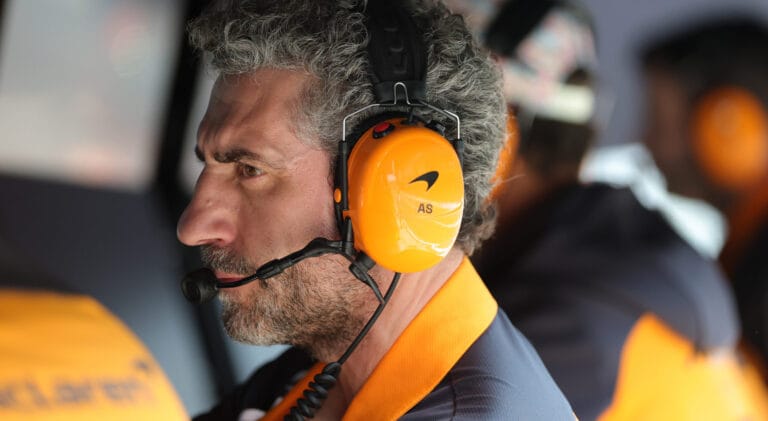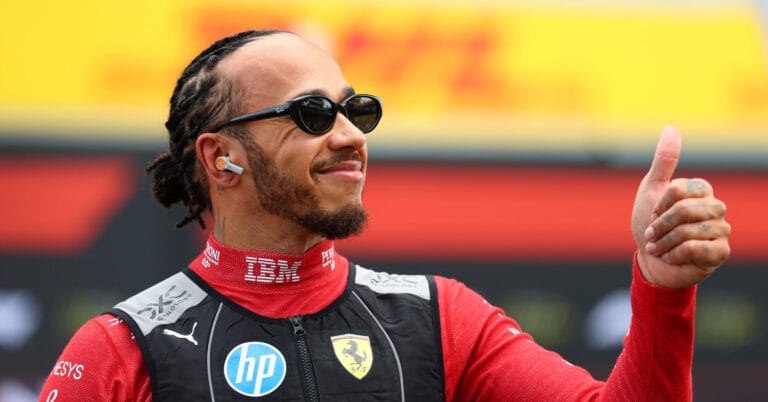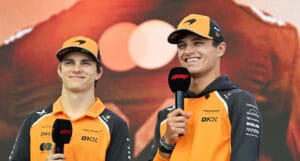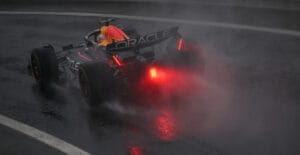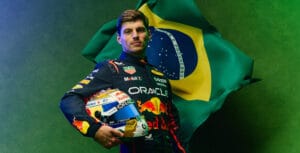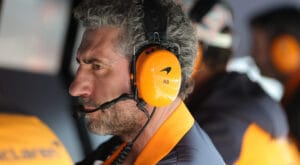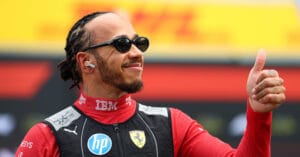Becoming a four-time consecutive Formula 1 world champion is quite common in the 21st century: Michael Schumacher did it (even five times!), Sebastian Vettel, Lewis Hamilton, and Max Verstappen. In the previous century, only one driver managed to achieve this: Juan Manuel Fangio. This past Wednesday marked thirty years since the Argentine maestro passed away. A portrait.
Juan Manuel Fangio is nothing but praised. Not only after his death, or after his career. His contemporaries and opponents also continually express their admiration and respect. Well, except for one…
Fangio himself is gracious, humble, sportsmanlike, and helpful. He always remembered where he came from. From Balcarce, a provincial nest in Argentina. As a child, he was already happy when he could drive the garbage cart to the dump.
In his parents’ garden, he tinkered with cars. He started a garage there. Occasionally, he participated in races with a self-made clunker. Then he took the gamble: he participated in a mega rally with a Chevrolet that he financed through a lottery: the grand prize was the Chevrolet. Ten thousand kilometers from Buenos Aires to Peru and back, across the Andes mountains. He won the race and became a hero in Argentina.
Faultless
After the Second World War, Argentine President Perón brought Formula 1 to his country as a publicity stunt. Fangio participated and the European champions were impressed. In 1949, Fangio raced in Europe, funded by the Argentine state. And he won. Time and time again. When the Formula 1 World Championship started in 1950, Alfa Romeo wanted him on their team. How much did he want to earn? Fangio – who was already 38 years old – replied: ‘Oh… just fill in something.’Juan Manuel Fangio after the Italian Grand Prix in Monza, 1953 (Getty Images)
Alfa dominates. Fangio wins three out of the six European races. Nino Farina also wins three. However, the Italian scores a fourth place at Spa and thus becomes the first Formula 1 world champion. The following year, Fangio wins three out of the seven European races. In the final, decisive Grand Prix in Barcelona, he defeats Alberto Ascari and becomes world champion. Argentina rejoices.
Fangio not only drives fast, but above all flawlessly, always, the entire race. He has tremendous endurance, gained from the grueling races in South America. Yet fatigue catches up with him at the beginning of 1952. Rushed and tired, he arrives in Monza, barely makes it to the race, and crashes terribly in the second Lesmo corner. The season is lost. The following year, with Maserati, he stands no chance against the Ferraris under the Formula 2 regulations.
Coming Home
In 1954, Mercedes beckons. Mercedes has a fantastic car and wants the best driver. For 2000 dollars per race, Fangio agrees. And because the car is not yet ready, he wins the first races in his old Maserati. All of this was still possible. With the Mercedes, Fangio outperforms the entire competition for a year and a half. Until Mercedes withdraws from motorsport after the disaster in Le Mans. Reluctantly, Fangio moves to Ferrari.
Ferrari despises Fangio. Because under Fangio’s fame, his cars’ glory fades. But they need each other. Fangio becomes world champion again, partly because teammate Peter Collins gives up his car to the Maestro in the decisive race. Collins does not want to win due to the great champion’s misfortune. All of this was still possible back then. In 1957, Fangio switches back to Maserati. ‘It felt like coming home…’
Fangio dominates again. ‘Fangio always had the best car,’ Moss smiled later, ‘but that was because he was also the best driver!’ While the competition wrecks their cars or crashes, Fangio meticulously drives to victories. Not counting the Indianapolis 500, he wins four of the first five races. In Argentina, Monaco, France, and Germany. In England, he drops out with engine trouble. With his victory in Germany, Fangio secures his fifth world title, and the fourth in a row.
Secrets
The race on the hellish Nordschleife is considered the crowning achievement of Fangio’s career. He has devised a special strategy beforehand: he will start on softer tires and with a half-full tank, so that he is so far ahead halfway through the race that he can make a pit stop. Easier said than done. In the opening round, he leaves the lead to Ferrari drivers Hawthorn and Collins, but then he takes off.Juan Manuel Fangio in action during the French GP in Reims in 1958 (Getty Images)
After twelve of the twenty-two laps (a lap on the Nordschleife is almost 23 kilometers long!), Fangio is 31 seconds ahead and drives into the pits. He gets out, has a drink, and then realizes that the pit stop is taking far too long. More than a minute! One of the mechanics has lost a wheel nut, and it’s only after a long search that they find it under the car…
The Ferraris have already zoomed past by the time Fangio departs again. The next lap, Fangio deliberately takes it easy. At Ferrari, they look satisfied and signal their leading drivers to slow down. A little later on the Döttinger Höhe, the Ferrari drivers exchange signals: Hawthorn points back and then gives a thumbs down. Collins nods: ‘The Old Man’ clearly has a problem.
Record Laps
Collins signals that Hawthorn can win. They conserve their cars and anticipate an easy double victory. Or so they think. But behind them, Fangio has already hit the accelerator. He starts an impressive series of record laps. It takes a full lap before Ferrari realizes this. And another lap before they can relay this to the two leaders.
With just four laps to go, they suddenly only have a twenty-second lead. Fangio spots a red dot in the distance and sets a lap record of 9 minutes 25 seconds. A lap later, he has caught up with them. Right behind the Ferraris, he crosses the start-finish line. The timekeeper falls off his chair: 9 minutes 17 seconds… Fangio has decided to drive a gear higher in every corner. He loves the Nordschleife: ‘It was love at first sight, but it wasn’t until 1957 that I unveiled all her secrets.’
In the Nordkurve, he overtakes Collins, and at Breidscheid, Hawthorn. He has enough left to fend off Hawthorn’s final attacks and wins with a 3.6-second lead. The crowd goes wild, realizing they have witnessed a historic race. Even the two Ferrari drivers are cheering on the podium, realizing that the Maestro has pulled off something fantastic.
No Daredevil
Years later, Fangio says: ‘I was never a daredevil. I always went to a certain point and no further. I never demanded too much of my car or myself. That day, however, I asked significantly more of myself. For two days, I couldn’t sleep. I was so excited that every time I closed my eyes, I relived that race. I made those leaps into the unknown in corners where I had never pushed to the limit before.’
Fangio is undisputedly the best driver of the fifties. His record of four consecutive titles is only matched by Michael Schumacher in 2003. His winning percentage (46%) is still a record. In 1958, the fire seems to have gone out, and he retires from racing. However, until his death in 1995, he is a welcome guest at every Grand Prix.


